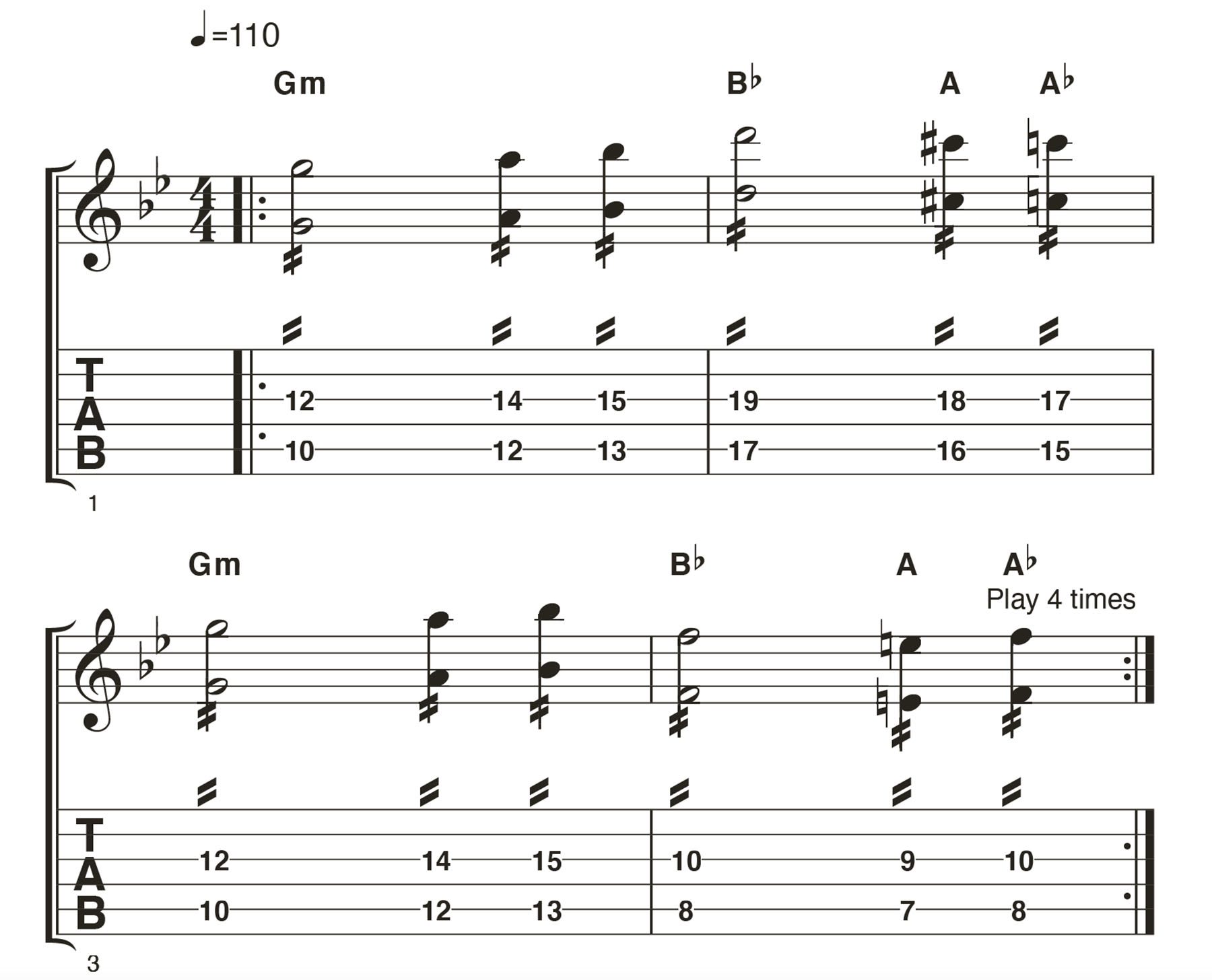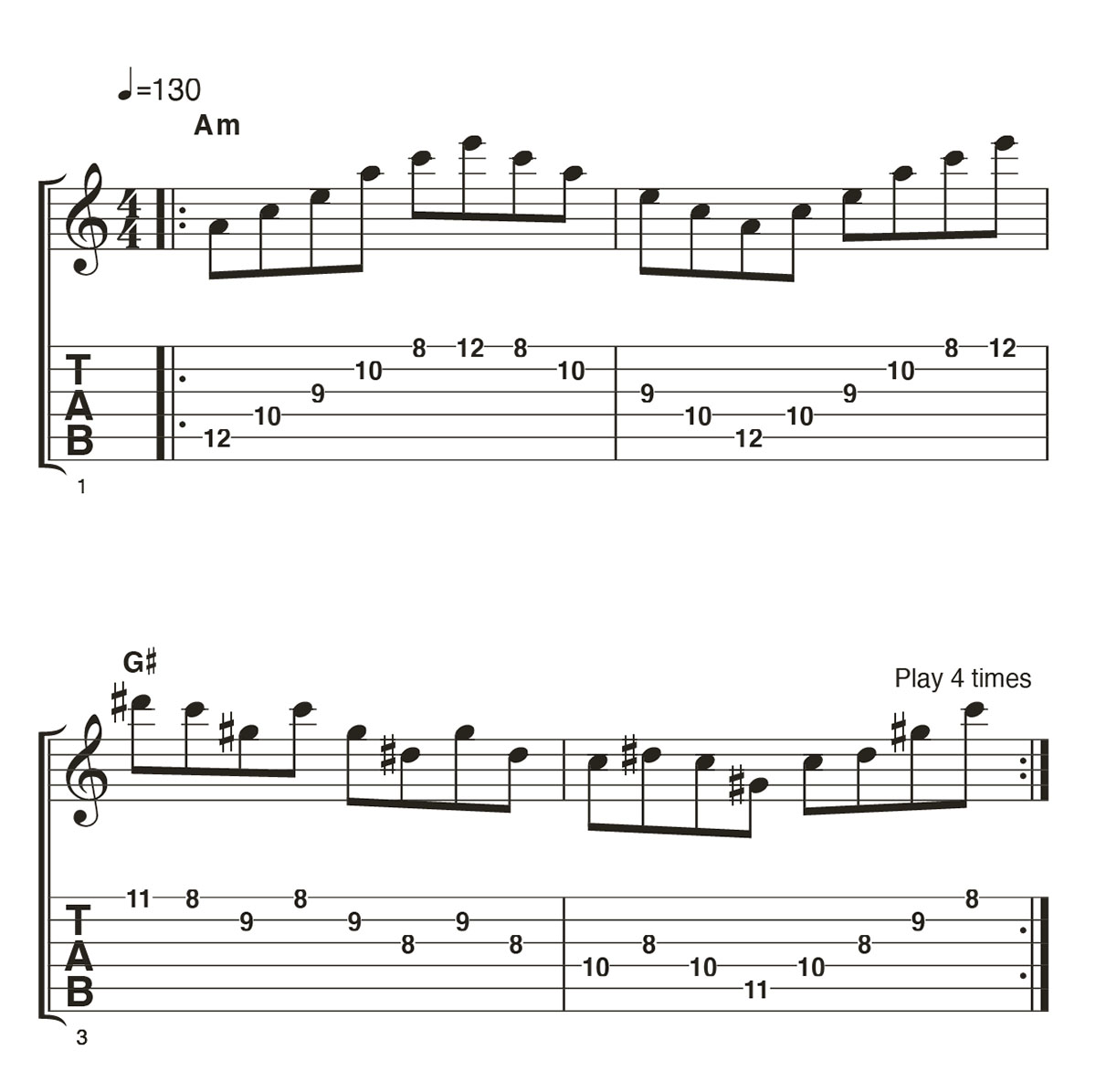10 guitar lessons you can learn from Muse’s Matt Bellamy
It’s time to plug in, baby, and take a closer look at Matt Bellamy’s supermassive guitar techniques

As one of the most forward-thinking and progressive guitarists on the planet, it’s safe to say there’s plenty to learn from Matt Bellamy – and we’re covering a fair amount of ground here with a set of lessons breaking down his style for you.
We’re looking at Matt’s classical-tinged chord progressions, his riffing style and blues approaches, plus we explain some of his shred techniques, too.
Probably the most important element to be aware of is his timing. Matt’s a tight player, and, whereas funk and blues guitarists tend to have a looser style, pushing notes early or laying back and behind the beat, Bellamy typically plays somewhat metronomically.
Bear this in mind as you work through our tab examples. Keep your timing tight and try to lock in with the drums when you jam along to our backing tracks. This is the secret that’ll get you closer to that trademark Muse feel.
Example 1. Pedal Riff

We begin by demonstrating Matt's pedal tone riff-writing style, taking our inspiration from two of Muse's biggest hits, Stockholm Syndrome and Supermassive Black Hole. The scale tones are all placed along the sixth string with the open string serving as a repeating E ‘pedal note’.
Example 2. Shuffle Feel

Though perhaps not always obvious, blues is a key part of the Muse sound. Check out songs like Uprising, Drones and recent release Will Of The People and you'll hear a blues shuffle groove driving things along.
Octave shapes and sixth-string riffing are typical Bellamy fare, paired with tight timing and a distorted, high gain tone.
Example 3. Tremolo Picking

This technique features on Time Is Running Out, The Gallery and various others, and it's a great way to rev up any simple melody.
Here in our example, the constant rapid-fire tremolo picking and high-gain humbucker tone turn an otherwise basic line into an incendiary lick. Keep your picking movements small and tight, with the motion coming mainly from your wrist.
Example 4. Sequenced Scales

The classical-inspired technique we're looking at here is reminiscent of Bach’s Toccata And Fugue, and you can hear it Muse’s Plug In Baby and Animals. Sequencing in this context means playing through a scale a few notes at a time.
Our lick begins with a sequence of ascending three-note runs through the E harmonic minor scale (E F# G A B C D#) before finishing with a sequence of descending four-note runs.
Example 5. Arpeggios

Matt uses arpeggios to create classical-style lead guitar lines. The arpeggio notes are the same as the notes in the chords; so, for the Am chord the notes are A, C and E, and for G# chord the notes are G#, B# and D. We're just moving up and down the arpeggios to create an interesting melody.
Example 6. Ascending Chord Progressions

Here we're getting to the heart of Muse-style chord progressions with an ascending sequence similar to Space Dementia.
Our example is structured around standard major and minor chords, with ‘outside the key’ slash chords connecting it all together in a chromatic bassline. When played ascending, this gives momentum that's perfect for an epic bridge or an exciting outro.
Example 7. Double Picking

Taking our inspiration from Matt's solo in Hysteria, the idea here is to pick each note twice, first with a downstroke, then an upstroke, to create a driving, melodic riff.
Rather than picking down and up parallel to the strings, try moving your pick inward and outward so your upstrokes are clear of the strings. This will make string changes cleaner and string skips much easier.
Example 8. Tapping

One of Matt’s shreddiest techniques is his Van Halen-inspired tapping method which you can hear in Reapers and the solo in Invincible.
For our example, use your second finger to tap and pull off from the 12th fret while resting the side of your palm on the other strings to keep them muted. Use the first and fourth fingers of your fretting hand to spell out the other notes.
Example 9. Minor Key / Major V

Another Bellamy chord progression trick here that’ll give you an epic Muse vibe. In a minor key the V chord should technically be minor. For example, in E minor (E F# G A B C D) the V chord is Bm (B-D-F#).
Change one note and make it a B major (B-D#-F#) and you get classical-tinged chord changes of New Born. Our example takes you through the ‘in key’ chords of Em, Am and G before hitting the all-important B major V chord.
Example 10. Legato

Another of Matt’s shreddier techniques, this legato line can be played with no picking at all once the first note has been sounded – just use pull-offs to the open D string for a smooth, uninterrupted stream of notes. The open D string here acts as a root note and the ascending notes are from the D harmonic minor scale (D E F G A Bb C#).
Get The Pick Newsletter
All the latest guitar news, interviews, lessons, reviews, deals and more, direct to your inbox!
Total Guitar is one of Europe's biggest guitar magazines. With lessons to suit players of all levels, TG's world-class tuition is friendly, accessible and jargon-free, whether you want to brush up on your technique or improve your music theory knowledge. We also talk to the biggest names in the world of guitar – from interviews with all-time greats like Brian May and Eddie Van Halen to our behind the scenes Rig Tour features, we get you up close with the guitarists that matter to you.
“There are so many sounds to be discovered when you get away from using a pick”: Jared James Nichols shows you how to add “snap, crackle and pop” to your playing with banjo rolls and string snaps
Don't let chord inversions bamboozle you. It's simply the case of shuffling the notes around








![Joe Bonamassa [left] wears a deep blue suit and polka-dotted shirt and plays his green refin Strat; the late Irish blues legend Rory Gallagher [right] screams and inflicts some punishment on his heavily worn number one Stratocaster.](https://cdn.mos.cms.futurecdn.net/cw28h7UBcTVfTLs7p7eiLe.jpg)


